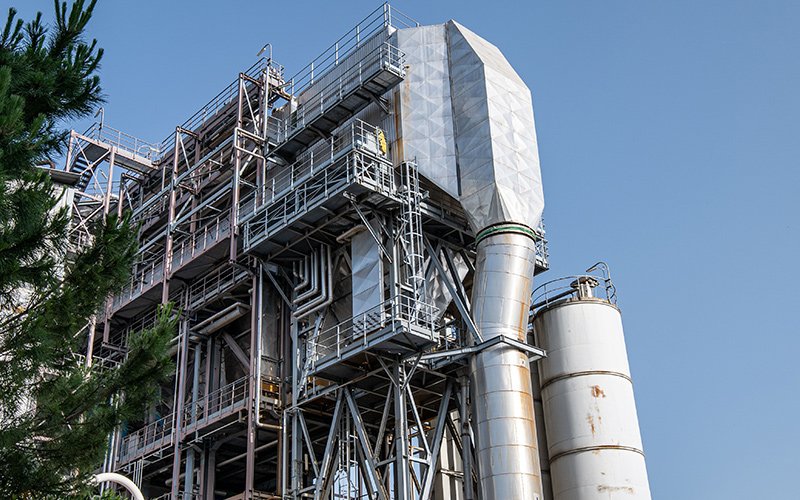In the realm of sustainable waste management, Waste-to-Energy Boilers have emerged as a revolutionary solution to address the challenges of domestic waste disposal. This cutting-edge technology has not only alleviated the continuous pressure on urban environmental management but has also transformed thousands of tons of domestic waste into a potent source of energy. Let’s delve into the application cases of Waste-to-Energy Boilers, where the daily generation of 600,000 kWh of electricity from household waste showcases the remarkable strides in environmentally friendly power generation.
The challenge of domestic waste disposal in urban environmental management has spurred the development of advanced technology waste incineration power plants in Tianjin, China, in recent years. These plants aim to address the persistent issues and challenges associated with the increasing volume of garbage in cities. The goal is to achieve the harmless treatment of domestic waste, promote resource utilization, and adopt cutting-edge technology for a clean, efficient, and low-carbon environmental protection approach.
One such facility is Tianjin Everbright Xingchen Environmental Energy Co., Ltd., situated in the Beichen District’s Shuangkou town. Despite being a facility dedicated to handling garbage, visitors are surprised to find no unpleasant odors throughout the entire plant. According to Shuangkou Township villager Zhao Xinyu, the plant not only avoids polluting the environment but also transforms waste into a valuable resource. Initially concerned about potential environmental contamination, residents now find the working environment pleasant and conducive, akin to a non-garbage treatment facility, leading to increased job opportunities and income for villagers.

The success in dealing with garbage is a source of satisfaction for Zhao Xinyu, who remarks, “This is better than traditional landfill practices by a significant margin. Many of our villagers have found employment in the plant, leading to increased income.”
As one walks into the spacious and well-lit garbage treatment operations, the faint hum of mechanical equipment can be heard. Addressing the challenge of deodorizing household garbage, Yin Xiaolong, the production and operation manager at Tianjin Everbright Xingchen Environmental Energy Co., Ltd., explained that the garbage storage warehouse is maintained in a negative pressure state. Garbage trucks utilize fully enclosed delivery channels to the unloading hall, where the negative pressure of the air ensures that garbage odors remain sealed within the garbage silo, preventing dispersion outside.
Waste-to-Energy Boiler Triumph: Transforming Domestic Waste into 600,000 kWh Daily
Utilizing advanced domestic processes, the plant ensures more comprehensive combustion of garbage in the incineration workshop, resulting in higher power generation efficiency. Yin Xiaolong highlighted the preliminary treatment of leaching and fermentation that garbage undergoes before entering the incineration production line. Driven by a 45 MW turbine generator set, the garbage becomes the fuel for power generation. Statistics reveal that the daily combustion of 1200 tons of garbage can generate up to 600,000 degrees of electricity, with the majority of this power being integrated into the national grid after a small portion is allocated for reproduction.
This innovative approach to waste management not only addresses environmental concerns but also contributes to the energy needs of the region, showcasing the potential for sustainable and technologically advanced solutions in handling domestic waste.
The enterprise has a total design scale for the daily treatment of domestic garbage at 3000 tons, making it the city’s largest daily treatment scale and the most advanced waste incineration power generation enterprise. The flue gas produced during garbage combustion for power generation undergoes purification using professional equipment, and the resulting slag is transported to the sorting workshop for resource treatment.
Yin Xiaolong, the production and operation manager, explained the incineration process, stating that when the Waste-to-Energy Boiler operates, the primary fan directs air contaminated with malodorous substances from the garbage collection warehouse into the Waste-to-Energy Boiler, where it burns and decomposes. The odor produced in the leachate area is also sent directly into the Waste-to-Energy Boiler through conveying pipes to fuel combustion, completing the decomposition of garbage in the entire production chain, turning waste into a valuable resource.
The Waste-to-Energy Boiler is equipped with state-of-the-art dry-semi-dry desulfurization, SNCR-SCR denitrification, activated carbon injection, bag dust removal, and other treatment facilities, surpassing upcoming local standards’ limit value requirements.
Wastewater in the enterprise is treated as a valuable resource. Garbage leachate, rinsing drainage from the garbage unloading area, rinsing water from garbage trucks, ground cleaning wastewater, initial rainwater, and kitchen wastewater are all treated and reused as recycled cooling water. This comprehensive wastewater treatment process achieves zero discharge of wastewater. The treated water meets the “urban wastewater recycling – industrial water quality” standards, and the thick water produced in the treatment process is utilized for lime pulping and flue gas cooling.
He Hai, assistant manager of the enterprise’s water treatment center, emphasized the importance of maximizing the use of wastewater as a valuable resource.
The city’s ecological environment bureau of atmospheric environment director, Wang Wenmei, provided an overview of Tianjin’s waste incineration power generation landscape. Currently, there are 13 domestic garbage incineration power plants in the city, with capacities distributed across different districts. The city’s domestic garbage treatment capacity is 18,200 tons/day, and nitrogen oxides emissions rank second only to coal and electricity, iron, and steel industries, contributing to nearly 20% of key industry emissions and serving as a significant source of PM2.5.
In response to the rising pollutant emissions trend from the waste incineration power generation industry, the Municipal Bureau of Ecology and Environment organized all 13 enterprises to develop and implement emission standards. These standards, fully implemented since November 1, target reducing NOx emissions by over 30%, supporting the continuous improvement of ambient air quality in Tianjin. Wang Wenmei highlighted the proactive measures taken to ensure the smooth operation of the new standards, including promoting standard transformations, overseeing treatment projects, and addressing potential risks to prevent excessive emissions affecting production and operation.
DHB Boiler
Discover The Superior Quality And Cutting-Edge Technology Of DHB Boilers. Explore Our Range Of Biomass Boilers, Waste Heat Boilers, And More. Take Your Industrial Operations To New Heights With DHB Boiler.








